

Related Efforts - Future of Research Communications. The Storytelling Animal: The Science of How We Came to Live and Breathe Stories. By Maria Popova Where a third of our entire life goes, or what professional wrestling has to do with War and Peace.
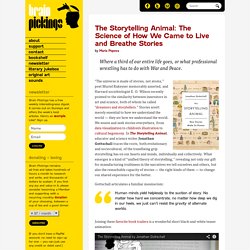
Pannell Discussions » 213 – The environmental planning fallacy. Psychologists studying the way that people plan projects have found that they are often way too optimistic – they think the project will take less time, or cost less, or achieve greater change, or that the change is worth more, relative to what is realistic based on experience with other similar projects.

We have observed exactly these tendencies in environmental planning, and seen that they create serious (but often unrecognised) problems for managers wishing to prioritise environmental projects. Psychologists Daniel Kahneman and Amos Tversky made very successful careers out of studying the biases that commonly occur in people’s thinking, culminating in Kahneman being awarded the Nobel Prize for Economics in 2002 (Tversky would surely have shared the award if he had still been alive). Kahneman’s recent book for a general audience, ‘Thinking, Fast and Slow’ (Kahneman, 2011), includes very enlightening and entertaining information about the various biases. Daniel Kahneman Further reading. Data and visualization blogs worth following. The Mind's Flight. Growing up my heroes were mostly scientists and writers – or people who were both: Charles Darwin and Charles Dickens; Jane Austen and Jane Goodall; Galileo, Stephen Jay Gould, Virginia Woolf and Gary Paulsen.
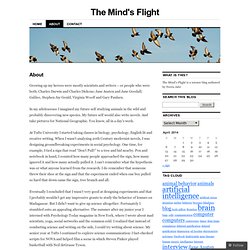
In my adolescence I imagined my future self studying animals in the wild and probably discovering new species. My future self would also write novels. And take pictures for National Geographic. Neurergus.org - Home. POSKOD.SG. The Diet of the Common Palm Civet in Singapore. WRC Pulse. If you can get beyond the shoveling, the hairy commuting and feeling like a Michelin Man every time you go outside, deep winter in Minnesota is a beautiful time of year.

Sundogs (like the one shown above) can be found in the sky, stars seem more brilliant than ever and the bright flash of a cardinal really stands out against the pristine white snow. But can cold ever be “too cold” for our feathered and furred friends? While winter does thin wild populations, most of our resident wildlife at this time of year are built to handle the cold. Tropical shark's log. So for breast cancer awareness, a social networking frenzy occurred where women were posing for selfie photos wearing no make up.
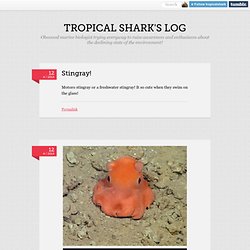
I got nominated a few times however, I felt this was pointless for me. The reasons: I only wear make up about 1% of the time so everyone has seen me without make up. Along with the photo a donation was meant to be made to cancer research. Purple Doesn’t Exist: Some thoughts on Male Privilege and Science Online. I don’t often write about gender and science, but I have been thinking and reading about it lately.

If you were hoping for my typical aloof lecturing, or overblown (yet intellectual) ranting, just wait a few days (or you could revisit what I think of David Brooks and Larry Summers). At a wonderful dinner out at the recent Science Online Conference, I found myself explaining why I consider myself a psychologist, even though some people don’t consider the study of visual perception “psychological.” This comes up often in response to the question: “Are you going to use your psychology knowledge to analyze me?” Inkfish. I’ve got your missing links right here (2 July 2011) World Seagrass Association. Every so often (but only as often as we receive contributions) we feature a seagrass meadow from around the world.
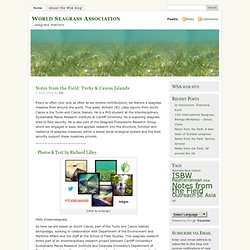
This week, Laura Soissons shares her observations of her field site in the Yellow River Delta in China. Laura is a PhD student with the Royal Netherlands Institute for Sea Research (NIOZ-Yerseke) studying human impacts on seagrass. “Where are the seagrasses?” This is the main question my colleagues and I had in mind last summer when we were visiting our field site in the Yellow River Delta area in China.
The Wildlife Society - GrantsNet. Shark Science Monday: the Known Unknowns of Shark Conservation. “There are known knowns; there are things we know we know.
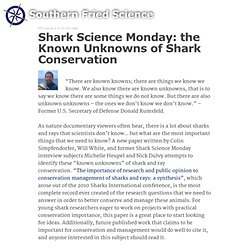
We also know there are known unknowns, that is to say we know there are some things we do not know. But there are also unknown unknowns – the ones we don’t know we don’t know.” – Former U.S. Secretary of Defense Donald Rumsfeld. As nature documentary viewers often hear, there is a lot about sharks and rays that scientists don’t know… but what are the most important things that we need to know? A new paper written by Colin Simpfendorfer, Will White, and former Shark Science Monday interview subjects Michelle Heupel and Nick Dulvy attempts to identify these “known unknowns” of shark and ray conservation.
The top 10 shark conservation stories of 2011. Caribbean reef shark, Bimini.
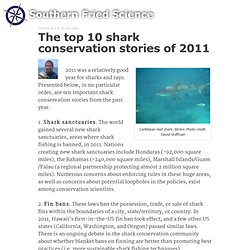
Photo credit: David Shiffman 2011 was a relatively good year for sharks and rays. Presented below, in no particular order, are ten important shark conservation stories from the past year. Brian Switek. Laelaps. Dr. John Yong's Guides to mangroves, mistletoes and ferns. Dr.
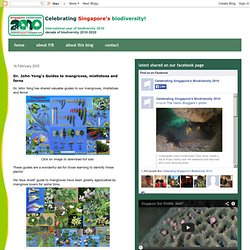
John Yong has shared valuable guides to our mangroves, mistletoes and ferns! Click on image to download full size. A Bit of Behavioral Ecology. Tl;dr: Andrew Fabich is a creationist 'microbiologist' at Liberty University who isn't a great scientist. Who is Andrew Fabich? This question has haunted me since I watched the debate between Ken Ham and Bill Nye. One of Ham's favourite tactics in that debate was to name-drop 'creationist scientists', as though a parade of Ph.Ds would somehow disprove evolution in a blaze of authority.
Most of his name-drops were typical creationists: engineers, medical doctors, and the like. LEARN FROM NATURE. MYRMECOS - Insect Photography - Insect Pictures. Dinosaur Tracking Blog - Where Paleontology Meets Pop Culture. The economics of science blogging. « A Bit of Behavioral Ecology. Well, Christie Wilcox has completed her series on scientists engaging with social media and unsurprisingly, I’ve got some thoughts. I’m not going to spend time recapping her argument here, because the points I’m going to make are fairly targeted so if you haven’t read what she’s written, you should go do so now. Done? Deep-Sea News. The Bug Geek. Time to tweet : Naturejobs. The Bug Whisperer. Scientists & Social Media; A Popular Subject » Biodiversity in Focus Blog. In the past few months, the topic of scientists taking to the netwaves to broadcast their ideas, opinions and research has been a popular topic.
Here’s a list of some of the different discussions that I’ve found regarding scientists participating in social media. Christie Wilcox (Cell & Molecular Biology Grad Student) – Science Sushi. Oso El Economista: THE EVIL SCIENCE. In a deep, but secluded glen within The Forest of a 100 and One Names, Oso El Economista mumbles and grumbles to himself as he reads yet another column in The Gray and Tired Old Lady by his favorite economist – Paul ‘The Seer’ Krugman.
He lets go another one of his famous bear sighs, and thinks: ‘What another load of typical Krugshit.’ Oso then scratches his ass and wonders – has the Krug ever said or written anything that has proven to be true? Science communication? I wish it were that easy… « A Bit of Behavioral Ecology. Image via CrunchBase Over at Scientific American, Christie Wilcox has written a provocative piece making the argument that every scientist should blog, be on Twitter, and otherwise throw themselves into the social media revolution. On Naïveté Among Scientists Who Wish to Communicate. My co-networker at Science Sushi, Christie Wilcox, wrote a heartfelt post about why she believes scientists need to jump away the lab bench and proclaim unto the world, SCIENCE! Information exchange (and stuff, too) via social media « The Bug Geek. News from the Field.
Busy Shinjuku district, TokyoFrom Japan’s electric metropolises seemingly pulled straight out of Akira or Blade Runner, China and Taiwan’s factories working 24/7 to supply our modern word with stuff and North Korea’s cold war cocoon with choreographed military parades to bamboo forests in the foothills of the Himalayas, alpine meadows on the slopes of a Hokkaido volcano and hidden mountain temples filled with the smell of burning incense, East Asia is an amazing place. On the nature side of things the region remains little studied and unfamiliar to those nature buffs in the general public more accustomed to seeing the savannas of Sub-Sarahan Africa or an Amazonian rainforest on the Discovery channel rather than Taiwan’s Central Mountain Range or Hong Kong’s Mai-Po wetlands.
The biodiversity of the region is certainly under appreciated with enormous potential to provide scientific insight on the power of biological evolution. Nature Blog Network - The Toplist for Every Species of Nature Blog. The ICCS Year-Round Cleanups at Tanah Merah East « News from the International Coastal Cleanup Singapore. About. About Coffee & Conservation. FAQs. Post-exam activities for undergraduate students « Otterman speaks… Bohemian Explorer. Octopus Chronicles: Adventures and Discoveries with the Planet's Smartest Cephalopods.
The Fig Tree Forum. Sustainability in a Changing World. Shades of Grey. Journey through paradise. tHE tiDE cHAsER. Wildlife encounters out and about in the UK. The annotated budak. NeuroDojo.